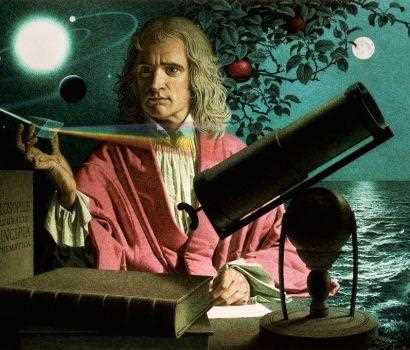The laws of gravitation and motion were invented by Sir Isaac Newton in 1687. Newton formulated his laws of motion in his work 'Philosophiæ Naturalis Principia Mathematica' (Mathematical Principles of Natural Philosophy).
- Newton's first law, also known as the law of inertia, states that an object at rest will remain at rest, and an object in motion will maintain a constant velocity unless acted on by an unbalanced force.
- His second law states that an object's acceleration is directly proportional to the net force acting on it and inversely proportional to its mass. This law is often represented as F=ma, where F is the net force acting on the object, m is its mass, and a is its acceleration.
- Newton's third law, also known as the law of action and reaction, states an equal and opposite reaction for every action. This means that when two bodies interact, the force exerted by one body on the other is always equal in magnitude but opposite in direction to the force exerted by the other body on the first.
- Finally, Newton's law of gravitation states that every point mass in the universe attracts every other point mass with a force that is proportional to the product of their masses and inversely proportional to the square of the distance between them. This law is often represented as F = G(m1*m2)/r^2 where F is the gravitational force, G is the gravitational constant, m1 and m2 are the masses of the two objects, and r is the distance between them.
These laws, known as the laws of motion, laid the foundation for classical mechanics, which describes the motion of bodies under the influence of forces, and the law of gravitation, which explains how objects are attracted to each other in the universe.

How did he invent these laws?
Isaac Newton formulated his laws of motion and law of gravitation through a process of observation, experimentation and mathematical analysis. He started his work on the laws of motion in 1666 after a plague outbreak forced him to leave Cambridge University and return to his family farm.
- Newton began by observing the motion of objects around him and considering the forces that were acting upon them. He conducted various experiments, such as rolling balls down inclined planes, to study the effect of forces on motion. He also made precise measurements of the motion of objects, such as the swinging of a pendulum.
- He also studied the works of other scientists and mathematicians, such as Galileo Galilei and Johannes Kepler, who had made significant contributions to the field of mechanics and mathematics. He was particularly influenced by Kepler's laws of planetary motion, which described how planets move in elliptical orbits around the sun.
- Newton used all these observations, experiments and knowledge to develop mathematical equations that described the motion of objects under the influence of forces. He then used these equations to formulate his three laws of motion. The third law of motion, which states that for every action, there is an equal and opposite reaction, helped him to understand the nature of forces and how they interact between objects.
- Finally, Newton formulated his law of gravitation by observing the motion of the planets and moons. He noticed that all objects in the universe seemed attracted to each other by a force that decreased with distance. He then developed a mathematical formula to describe this force, known as the law of gravitation.
Overall, Newton's laws of motion and gravitation resulted from a rigorous scientific process of observation, experimentation and mathematical analysis. He was able to make connections between different phenomena and develop a comprehensive understanding of the mechanics of motion and gravity.